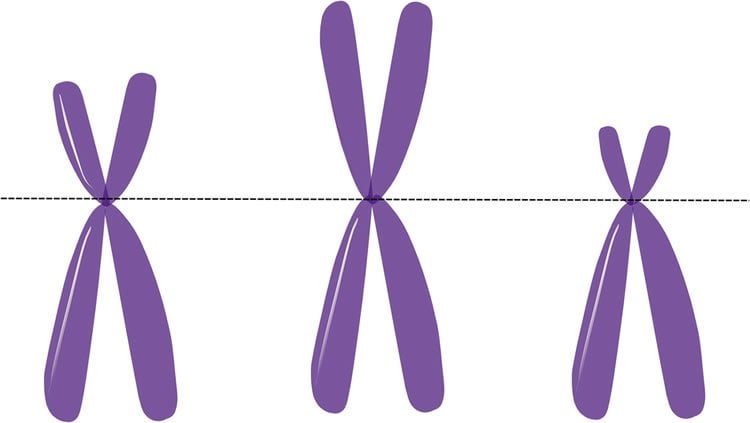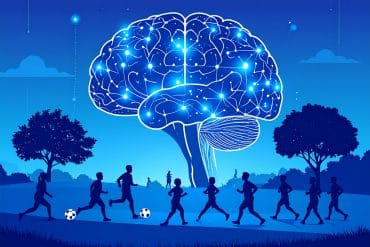Summary: Researchers have identified a single protein that could be responsible for causing a number of behavioral symptoms as well as molecular and cellular abnormalities in Fragile X.
Source: Michigan State University.
Fragile X syndrome is the most common cause of autism. Even though the single gene that’s responsible for it was discovered in 1991, and the disease is detected by a simple blood test, there’s no treatment or cure.
A team of researchers led by Michigan State University, however, has provided a promising lead in battling this disease. In the current issue of Nature Communications, the scientists identified a single protein that appears to be the culprit in causing many behavioral symptoms as well as molecular and cellular abnormalities related to Fragile X.
“We began with 600-800 potential protein targets, searching for the equivalent of a needle in a haystack,” said Hongbing Wang, MSU physiologist and study co-author. “Our needle turned out to be ADCY1. When we compared levels of this protein in Fragile X mouse model to normal controls, we saw a 20-25 percent increase of ADCY1.”
Subsequent tests of the team’s prime-target protein on the Fragile X mouse model revealed four key results. First, by reducing the expression of ADCY1, the team eliminated many autism-like behaviors. Second, the protein’s increased expression caused increased signaling in neurons. By reducing levels of ADCY1, the team dampened neuron signaling to levels within a normal range.
Lastly, neurons associated with Fragile X have excessive dendritic spines, or bumps, when compared to those in healthy patients. Reduction of the rampant protein also resulted in improving the appearance of the neurons.
Finding a single target that’s responsible for so many of the causes makes the research attractive to pharmaceutical companies, Wang said.
“Our research has identified a key target and a new approach that could easily be pursued by pharmaceutical companies,” he said. “We’ve shown an accessible target that, through treatment using NB001, suppresses activity. The next steps would be to test toxicity and optimization.”

NB001, an experimental compound that also holds potential as a painkiller, delivered positive preliminary toxicity tests as well as demonstrated the ability to pass the blood brain barrier, the protective membrane separating the bloodstream from brain extracellular fluid.
Although the study revealed a critical target and potential medicine, the findings are still years away from being considered for human clinical trials, Wang added.
In addition to potential drug development for adults, future studies could focus on children. Since the team studied adult mice, the question of catching the problem at an earlier age has yet to be addressed. If caught at an early age by a blood test, could the disease be stopped before symptoms surfaced?
Additional MSU researchers who were part of this study include Ferzin Sethna, Qi Ding and Alfred Robison. Wei Feng and Yue Feng with Emory University also contributed to the paper.
Funding: The National Institutes of Health and FRAXA Research Foundation funded this research.
Source: Layne Cameron – Michigan State University
Image Source: NeuroscienceNews.com image is in the public domain.
Original Research: Abstract for “The LINK-A lncRNA interacts with PtdIns(3,4,5)P3 to hyperactivate AKT and confer resistance to AKT inhibitors” by Aifu Lin, Qingsong Hu, Chunlai Li, Zhen Xing, Guolin Ma, Cheng Wang, Jun Li, Yin Ye, Jun Yao, Ke Liang, Shouyu Wang, Peter K. Park, Jeffrey R. Marks, Yan Zhou, Jianwei Zhou, Mien-Chie Hung, Han Liang, Zhibin Hu, Hongbing Shen, David H. Hawke, Leng Han, Yubin Zhou, Chunru Lin & Liuqing Yang in Nature Communications. Published online February 20 2017 doi:10.1038/ncb3473
[cbtabs][cbtab title=”MLA”]Michigan State University “Promising Lead That May Reduce Autism Symptoms.” NeuroscienceNews. NeuroscienceNews, 8 March 2017.
<https://neurosciencenews.com/autism-protein-symptoms-6218/>.[/cbtab][cbtab title=”APA”]Michigan State University (2017, March 8). Promising Lead That May Reduce Autism Symptoms. NeuroscienceNew. Retrieved March 8, 2017 from https://neurosciencenews.com/autism-protein-symptoms-6218/[/cbtab][cbtab title=”Chicago”]Michigan State University “Promising Lead That May Reduce Autism Symptoms.” https://neurosciencenews.com/autism-protein-symptoms-6218/ (accessed March 8, 2017).[/cbtab][/cbtabs]
Abstract
The LINK-A lncRNA interacts with PtdIns(3,4,5)P3 to hyperactivate AKT and confer resistance to AKT inhibitors
Phosphatidylinositol-3,4,5-trisphosphate (PtdIns(3,4,5)P3 or PIP3) mediates signalling pathways as a second messenger in response to extracellular signals. Although primordial functions of phospholipids and RNAs have been hypothesized in the ‘RNA world’, physiological RNA–phospholipid interactions and their involvement in essential cellular processes have remained a mystery. We explicate the contribution of lipid-binding long non-coding RNAs (lncRNAs) in cancer cells. Among them, long intergenic non-coding RNA for kinase activation (LINK-A) directly interacts with the AKT pleckstrin homology domain and PIP3 at the single-nucleotide level, facilitating AKT–PIP3 interaction and consequent enzymatic activation. LINK-A-dependent AKT hyperactivation leads to tumorigenesis and resistance to AKT inhibitors. Genomic deletions of the LINK-A PIP3-binding motif dramatically sensitized breast cancer cells to AKT inhibitors. Furthermore, meta-analysis showed the correlation between LINK-A expression and incidence of a single nucleotide polymorphism (rs12095274: A > G), AKT phosphorylation status, and poor outcomes for breast and lung cancer patients. PIP3-binding lncRNA modulates AKT activation with broad clinical implications.
“The LINK-A lncRNA interacts with PtdIns(3,4,5)P3 to hyperactivate AKT and confer resistance to AKT inhibitors” by Aifu Lin, Qingsong Hu, Chunlai Li, Zhen Xing, Guolin Ma, Cheng Wang, Jun Li, Yin Ye, Jun Yao, Ke Liang, Shouyu Wang, Peter K. Park, Jeffrey R. Marks, Yan Zhou, Jianwei Zhou, Mien-Chie Hung, Han Liang, Zhibin Hu, Hongbing Shen, David H. Hawke, Leng Han, Yubin Zhou, Chunru Lin & Liuqing Yang in Nature Communications. Published online February 20 2017 doi:10.1038/ncb3473






